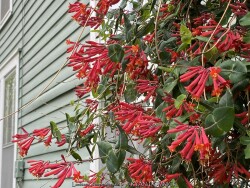
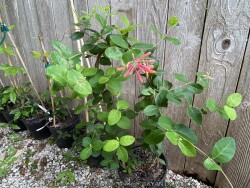
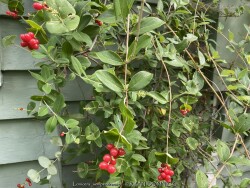
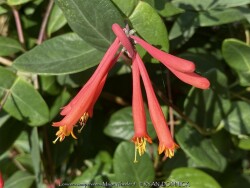
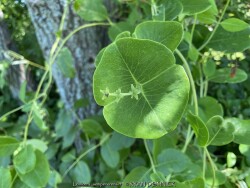
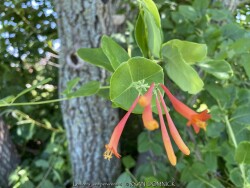
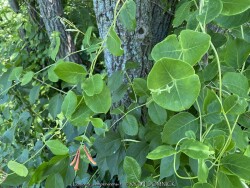
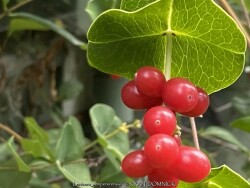
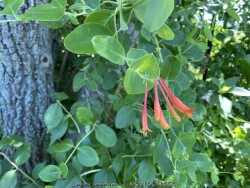
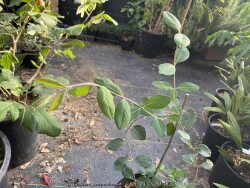
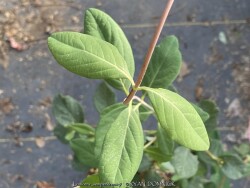

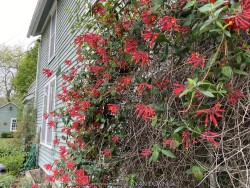
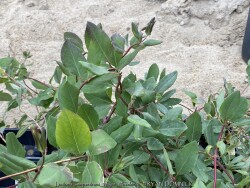
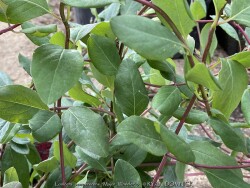
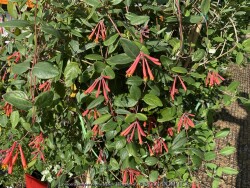
Plant Min Zone: 4a
Plant Max Zone: 9b
Sunlight: Full Sun, Part Sun, Shade
Water / Rainfall: Average
Soil Quality: Average, Rich
Bloom Season: Early Summer, Summer, Late Summer
Flower Color: Orangish Red, Salmon, Multi-Colored
Berry / Fruit Color: Red, Orangish Red
Spring Foliage Color: Green
Summer Foliage Color: Green
Fall Foliage Color: Green, Purplish Green
Evergreen Foliage: No
Winter Interest: No
Scented Flowers: Yes
Drought Tolerance: Medium
Wet-Feet Tolerance: Medium
Humidity Tolerance: Medium
Wind Tolerance: Medium
Poor Soil Tolerance: Clay Soils, Rocky Soils
Height: 6' - 10'
Width: 3' - 6'
Growth Rate: Medium
Service Life: Extremely long: over 20 years
Maintenance Need: Medium
Spreading Potential: Medium
Yearly Trimming Tips: Trim Vines as Needed / Training May be Needed.
Plant Grouping Size: Specimen Planting of 1-3
Best Side of House: South Exposure, West Exposure, East Exposure, North Exposure
Extreme Planting Locations: None
Ornamental Features: Long Lasting Fall Color, Long Blooming Season, Multiple Seasons of Interest
Special Landscape Uses: Noise / Wind Screening
Possible Pest Problems: Foliage Disease, Aphids
Plant Limitations: Needs Frequent Pruning / Trimming
Shippable in 2026: YES
Coral Honeysuckle / American Honeysuckle (Lonicera sempervirens) is native to eastern North America. It is a vine planted for its blue-green oval shaped foliage and gorgeous reddish/pink/orange flowers. American Honeysuckle is normally used in the landscape to cover trellises, pergolas, fences, and trees. Mature vines, when allowed to climb, flower and provide a valuable food source for hummingbirds, butterflies and other birds. Grow in rich, well drained soils in part shade or full sun. Sometimes foliage persists well into fall as it is a semi-evergreen plant in the South. Other times, foliage becomes too bedraggled to be effective if summers are too hot and humid causing powdery mildew and leaf spots to occur. After establishment, most vines can be high maintenance if it has already filled the space and you don't want it to spread any further so plan accordingly. It will climb trees if you allow it to naturalize, generally using it for support and not injuring it. The growth and foliage prefers to stay within the shade of canopy not covering over it. For the home garden, the species is a great native alternative to invasive Asian and Japanese honeysuckles.